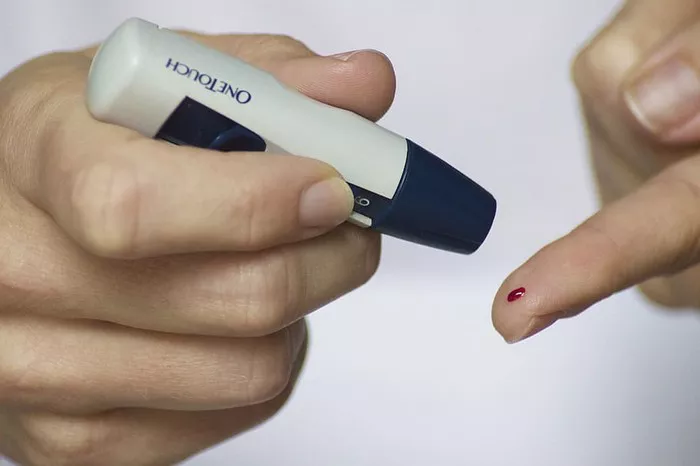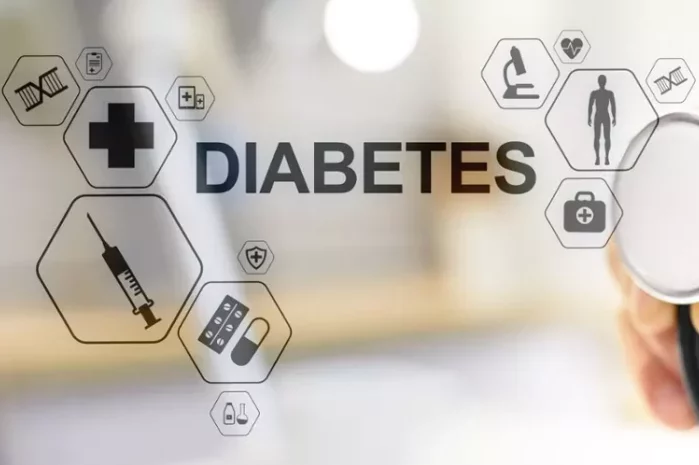The Hemoglobin A1c (HbA1c) test has become a cornerstone in the management and diagnosis of diabetes. Unlike daily glucose tests that provide a snapshot of a patient’s blood sugar levels at a single moment, the HbA1c test offers a broader perspective, reflecting the average blood glucose levels over the past two to three months. This article delves into the intricacies of non-fasting HbA1c levels, exploring what is considered normal, the factors that influence these levels, and their significance in diabetes management.
The Basics of HbA1c
What is HbA1c?
Hemoglobin A1c (HbA1c), also known simply as A1c, is a form of hemoglobin that is chemically linked to glucose. The HbA1c test measures the percentage of hemoglobin proteins in the blood that are glycated, meaning they have glucose attached to them. Since red blood cells live for about 120 days, the HbA1c test reflects the average blood glucose levels over the past two to three months.
The Importance of HbA1c in Diabetes Management
HbA1c is an essential marker for long-term glycemic control. It provides a more comprehensive view of a patient’s blood sugar levels than daily blood glucose monitoring. Regular HbA1c testing helps healthcare providers adjust treatment plans to better manage diabetes, prevent complications, and assess the risk of developing diabetes-related conditions such as cardiovascular disease, neuropathy, and retinopathy.
Normal Non-Fasting HbA1c Levels
Defining Normal HbA1c
For individuals without diabetes, a normal HbA1c level typically ranges from 4.0% to 5.6%. This range indicates that blood glucose levels have been within the normal range consistently over the past few months. An HbA1c level between 5.7% and 6.4% suggests prediabetes, a condition where blood sugar levels are higher than normal but not yet high enough to be classified as diabetes. An HbA1c level of 6.5% or higher is used to diagnose diabetes.
Non-Fasting vs. Fasting HbA1c
One of the advantages of the HbA1c test is that it does not require fasting. This makes it a convenient and practical tool for both patients and healthcare providers. Fasting blood glucose tests measure blood sugar levels after an individual has not eaten for at least eight hours, while the HbA1c test measures the average blood sugar over a longer period, irrespective of recent meals. This means that the HbA1c test can be performed at any time of day, without the need for specific preparation.
Factors Influencing HbA1c Levels
Genetic Factors
Genetics play a significant role in an individual’s HbA1c levels. Variations in genes that influence red blood cell turnover and glucose metabolism can affect HbA1c levels. Some people may naturally have higher or lower HbA1c levels due to their genetic makeup.
Age and HbA1c
Age can also impact HbA1c levels. Research suggests that HbA1c levels may increase slightly with age, even in individuals without diabetes. This age-related increase is thought to be due to changes in red blood cell turnover and other metabolic factors. Therefore, age-specific reference ranges may be considered in clinical practice to account for these variations.
Medical Conditions and Medications
Certain medical conditions and medications can influence HbA1c levels. For instance, conditions that affect red blood cell turnover, such as anemia, hemoglobinopathies, and chronic kidney disease, can lead to inaccurate HbA1c readings. Some medications, such as corticosteroids and antiretroviral drugs, can also impact blood sugar levels and, consequently, HbA1c levels.
Lifestyle Factors
Lifestyle factors, including diet, physical activity, and stress, significantly affect blood glucose levels and HbA1c. A balanced diet, regular physical activity, and effective stress management can help maintain healthy blood sugar levels. Conversely, poor dietary choices, sedentary behavior, and chronic stress can lead to elevated HbA1c levels.
Clinical Implications of Non-Fasting HbA1c Levels
Diagnosing Diabetes
The HbA1c test is a key diagnostic tool for diabetes. An HbA1c level of 6.5% or higher on two separate occasions confirms a diabetes diagnosis. The test is particularly useful because it reflects long-term glycemic control and does not require fasting, making it easier for patients to undergo testing.
Monitoring Diabetes
For individuals with diabetes, regular HbA1c testing is crucial for monitoring disease progression and the effectiveness of treatment plans. The American Diabetes Association (ADA) recommends that people with diabetes undergo HbA1c testing at least twice a year if they are meeting treatment goals and have stable glycemic control. If treatment changes or if patients are not meeting glycemic targets, more frequent testing, such as every three months, is advised.
Target HbA1c Levels
The ADA recommends a target HbA1c level of less than 7% for most adults with diabetes. However, individualized targets may be set based on a patient’s specific circumstances, including age, duration of diabetes, comorbid conditions, and risk of hypoglycemia. For example, a more stringent target of less than 6.5% may be appropriate for younger patients with a longer life expectancy and no significant comorbidities, while a less stringent target of less than 8% may be considered for older patients or those with multiple comorbidities.
The Role of Continuous Glucose Monitoring (CGM)
Advancements in Glucose Monitoring
Continuous Glucose Monitoring (CGM) systems have revolutionized diabetes management by providing real-time data on blood glucose levels throughout the day and night. CGM devices measure glucose levels in the interstitial fluid, offering detailed insights into glycemic patterns and trends. This technology complements HbA1c testing by highlighting daily fluctuations and the impact of meals, exercise, and other factors on blood sugar levels.
Benefits of CGM
CGM provides several benefits, including reducing the risk of hypoglycemia, improving glycemic control, and enhancing the ability to make informed decisions about insulin dosing, diet, and physical activity. For patients with diabetes, particularly those on insulin therapy, CGM can lead to better outcomes and a higher quality of life.
Integrating CGM with HbA1c
While HbA1c remains a valuable tool for assessing long-term glycemic control, integrating CGM data provides a more comprehensive view of a patient’s glucose management. Healthcare providers can use CGM data to fine-tune treatment plans and address specific glycemic patterns that may not be evident from HbA1c results alone.
Interpreting HbA1c Results in Clinical Practice
Individual Variability
Understanding that HbA1c levels can vary between individuals is crucial for accurate interpretation. Factors such as age, ethnicity, and underlying health conditions can influence HbA1c levels. For instance, studies have shown that African American and Hispanic individuals may have higher HbA1c levels than Caucasians, even at similar blood glucose levels. Healthcare providers must consider these variations when interpreting HbA1c results and setting individualized targets.
Limitations of HbA1c Testing
Despite its widespread use, HbA1c testing has limitations. Conditions that affect red blood cell lifespan, such as anemia and hemoglobinopathies, can lead to misleading HbA1c results. Additionally, HbA1c does not capture short-term fluctuations in blood glucose levels, which can be critical for managing diabetes on a day-to-day basis. Combining HbA1c testing with other monitoring methods, such as self-monitoring of blood glucose (SMBG) and CGM, provides a more comprehensive picture of glycemic control.
Case Studies and Clinical Scenarios
Examining case studies and clinical scenarios can help illustrate the practical application of HbA1c testing in diabetes management. For example, consider a patient with type 2 diabetes who has an HbA1c level of 8.2%. Despite being on multiple oral medications, their glycemic control remains suboptimal. By analyzing their CGM data, the healthcare provider identifies significant postprandial spikes and adjusts the treatment plan to include a short-acting insulin before meals. Over the next three months, the patient’s HbA1c level decreases to 7.1%, demonstrating improved glycemic control through a tailored approach.
Future Directions in HbA1c Research and Technology
Novel Biomarkers
Research into novel biomarkers for glycemic control is ongoing. Scientists are exploring markers such as advanced glycation end-products (AGEs) and fructosamine as potential alternatives or complements to HbA1c. These markers could provide additional insights into glucose metabolism and diabetes management.
Technological Innovations
Advancements in technology continue to enhance the accuracy and convenience of HbA1c testing. Point-of-care HbA1c testing devices, which provide results within minutes, are becoming more widely available. These devices can improve patient compliance and facilitate timely clinical decision-making. Additionally, research into non-invasive HbA1c testing methods, such as infrared spectroscopy and wearable sensors, holds promise for the future.
Personalized Medicine
The future of diabetes management lies in personalized medicine. By integrating genetic, metabolic, and lifestyle data, healthcare providers can develop individualized treatment plans that optimize glycemic control and reduce the risk of complications. Precision medicine approaches, including pharmacogenomics and tailored dietary recommendations, have the potential to transform diabetes care and improve outcomes for patients.
See also: What are Ideal Blood Sugar Levels
Conclusion
The HbA1c test remains a vital tool in the diagnosis and management of diabetes, providing a long-term view of blood glucose levels without the need for fasting. Understanding normal non-fasting HbA1c levels and the factors that influence them is crucial for effective diabetes care. By considering individual variability, leveraging advanced monitoring technologies, and embracing personalized medicine, healthcare providers can enhance glycemic control and improve the quality of life for patients with diabetes. As research and technology continue to evolve, the future of diabetes management holds great promise for more precise and effective interventions.
Related topics:



























